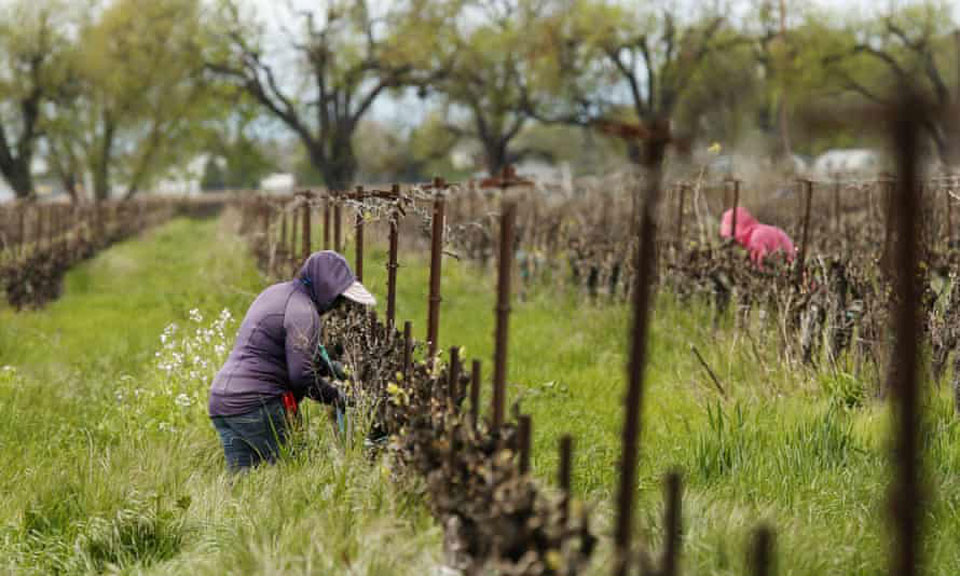
Before the sun rises over the green hills and steep valleys of California, migrant farmworkers’ feet have already touched the rich dark soil found on farmland. Their hands and feet will remain there, threshing and picking the fruit and vegetables adorning the supper table of U.S. households, long after the sun begins to set.
On an October morning in 2015, union organizers from the United Farm Workers arrived at a strawberry plant nursery in Northern California to talk with workers about conditions there and encouraging them to consider organizing with the union.
UFW organizers entered the nursery grounds legally under a 1975 state regulation, under the California Agricultural Labor Relations Board– one unique to the entire U.S—allowing union organizers to meet with agricultural workers at a worksite in the hours before and after work and during lunch breaks for as many as 120 days a year. This regulation was a practical way to give farmworkers, often a nomadic group of laborers, a real chance to consider organizing a union.
On Monday, March 22, 2021, the U.S. Supreme Court heard oral arguments in a case brought forward by Mike Fahner, the nursery owner, against ALBA’s decades-long state regulation. The nursery argues that the access given to union organizers amounts to a government taking of private property without compensation, as outlined in the U.S. Constitution’s Fifth Amendment.
The organizing campaign at the Cedar Point Nursery was short-lived. The UFW found there was not enough support amongst the workers to call for a union election. During the campaign, Cedar Point filed an unfair labor practice accusing the union of “organizing a strike on private property, blocking entrances and exits, interference with production, and creating an atmosphere of intimidation and coercion.”
In 2016 the California ALRB ruled in favor of the union, dismissing the ULP saying, “While UFW organizers met with striking employees and were present during the strike, the actions of the striking workers are not attributable to the UFW.”
The case is the High Court’s first involving a labor dispute since the arrival of Justice Amy Coney Barret and has the potential to define what union organizers can or can’t do on California farms. The case does more than just settle a union dispute, and could have far-reaching, albeit negative, consequences including limiting the federal government’s ability to enter private property to conduct health and safety inspections or entering facilities like coal mines, pharmaceutical plants, and home visits by social workers charged with the welfare of at-risk children.
Supreme Court precedent has often distinguished between two types of government “takings” of private property: those that physically claim a property interest and those that impose a regulatory burden.
The first “per se takings” requires compensation, the second only where the economic effect is substantial.
The question before the High Court is now whether the union organizers’ access regulation amounts to “per se.”
During oral arguments, Joshua Thompson, representing Cedar Point and Fowler Packing Company, told Justices that because the regulation allows organizers the right to enter and stay on the business property, it is a “taking.” The regulations placed on how long organizers could stay on the property are only relevant to determine how much compensation the businesses are owed, and not whether the taking occurred in the first place, Thompson argued.
Solicitor General of California, Michael Mongan, defended the regulation and emphasized its narrowness in scope, allowing for only a limited number of organizers to enter the farm at certain times, and for the limited purpose of talking with workers.
Justice Brett Kavanaugh said the court had, decades ago, considered how to balance the rights of unions and property owners, and the High Court concluded there could be “no access unless you can show that there are no alternative means of communication that exists,” Kavanaugh said.
Justice Clarence Thomas posed the question of whether there was any difference between the regulation and a requirement to allow National Guard Troops or state police to train on private property during non-business hours for up to three hours a day, 120 days a year.
For the liberal wing of the bench, the issue boiled down to health and safety regulations.
In court documents filed before President Joe Biden’s inauguration, the Trump administration had urged the justices to side with the businesses. The Biden administration changed the government’s position.
One thing to note, however, since there is no law like this one anywhere else, the Supreme Court has previously said a federal law–excluding agricultural workers, may allow union organizers to enter private property in limited circumstances.
“If the location of a plant and the living quarters of the employees place the employees beyond the reach of reasonable union efforts to communicate with them,” wrote Justice Stanley Reed for the court in 1956, “the employer must allow the union to approach his employees on his property.”
How the High Court will rule is difficult to tell, though some Supreme Court prognosticators have signaled a win for business. This newly minted conservative Supreme Court majority could shift the balance in favor of expanding the exclusionary rights given to private property owners, undermining the health and safety of many. And with the High Courts’ previous blows against organized labor and working people, it would not be too farfetched.
To sum it up: a decision in favor of the nursery could, and will, undermine several laws aimed at protecting the U.S. public.
A decision in the case of Cedar Point Nursery, et al., Petitioners v. Victoria Hassid, et al. is expected at the end of June when the court breaks for the summer.










